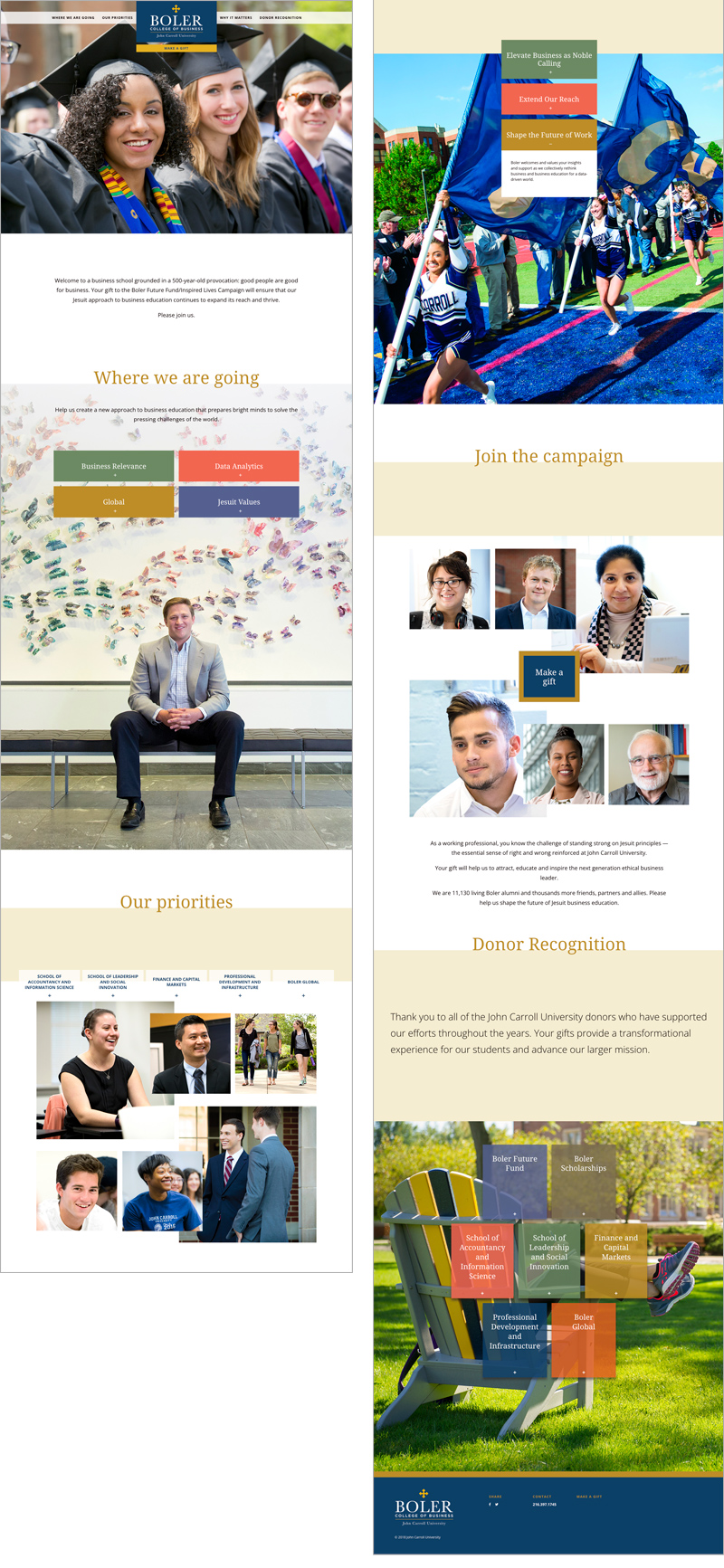| Aug 25, 2024
Higher Education Microsites: Benefits, Uses and Best Practices

Microsites offer colleges, universities and higher education institutions a powerful tool for addressing specific needs with focused, flexible, and engaging online experience. By distilling arguments, they enhance communication, improve user engagement, and support targeted marketing and outreach efforts, making them an essential component of modern higher education strategies. They usually reside on a separate sub-domain and have custom navigation, design and content.
Benefits of Microsites
A microsite is akin to movie trailer:
- Speed — it is fast to produce, can rapidly evolve and enable you to keep pace with agile competitors.
- Performance — it is nimble & efficient.
- Focus — it embodies zero distractions.
- One audience, one mission — it enables you to create a distilled argument, without distractions.
- Google Ranking Engine – it is laser focused Google page one ranking machine.
- Romance — it sells the dream.
- More persuasion – it lets you influence outcomes without getting mired in the process.
- Down Payment on a Brighter Future. — the time, investment and effort put into each microsite is a sizable down payment towards a larger website. Nothing is wasted — content, design, and development can be carried forward eventually. By pacing the work and investment, the transition to a new website is less demanding on client marketing and IT teams.
Uses of Microsites
Microsites are used to address various unique situations in enrollment, advancement, reputation management, program launches, and strategic planning. Here are a few examples:
Admissions Microsites
Elliance recently recommended replacing the large osteopathic medical school website with a lean, mobile-first, SEO-powered microsite that distills the argument for KCU into fewest possible pages. Within 3 months of launch, it secured 15+ fiercely competitive Google page one rankings.

Admitted Student Microsites to Improve Admissions Yield
In today’s world, the college application is the new inquiry. Enrollment managers can’t expect admitted students to accept their offers and simply show up. They must continue to romance them until they show up on campus. Admitted student microsites represent just one of the tactics to guide students in this direction.
The following is an example of an accepted student microsite that on-ramps them to a successful start.

Capital Campaign Microsites
Capital campaign microsites are specialized websites created to support a capital campaign—fundraising initiatives aimed at raising significant amounts of money, typically for large projects like building expansions, endowments, or major initiatives. These microsites are separate from an organization’s main website and are designed to focus solely on the campaign, providing a centralized platform to engage donors, share updates, and track progress.

Microsite For Building Reputation
Reputation microsites answer the question: Why should we consider enrolling at your college or university?


New Program Launch Microsites
Launching a new academic program creates an opportunity to create a microsite experience commensurate with the magnitude of the program. Here is an example of a microsite that we launched for a new $68,000 masters program for Carnegie Mellon. It resulted in 12X enrollment growth and securing more than 50 Google page one rankings.

Strategic Plan Microsites
Strategic plan microsites serve as a centralized platform to communicate the institution’s long-term goals, priorities, and initiatives, often within a specific timeframe. They provide a clear, accessible way for stakeholders — such as students, faculty, alumni, donors, and the broader community — to understand the institution’s vision and the steps it will take to achieve it.
Best Practices for Creating Higher Education Microsites
Here are the best practices we use to create them:
- Begin with a clear objective and an understanding of audiences.
- Make them a hermetically sealed experience with the only escape route being to take an action — to fill out a form or to sign-up for something.
- Be respectful to your brand identity and color palette, but go beyond the template structure of your institutional website. Great microsites often yield insights that help evolve your standard website templates.
- Build them outside your CMS. The speed to market and flexibility to rapidly evolve it will give you a competitive edge.
- Infuse focused keywords to maximize the chance for your microsite to surface on Google page one.
- Use .edu sub-domains to house them instead of using .com because an .edu is given a preferential treatment by Google.
If you are seeking college website design agencies, please see our work and consider partnering with us.
